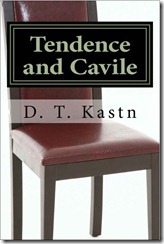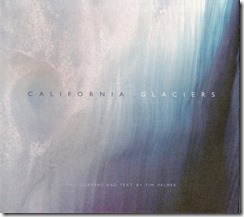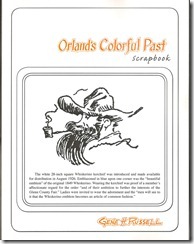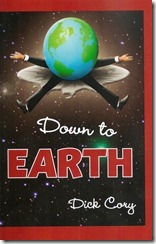If you fiddle with time, as most science-fiction readers know, time is likely to fiddle back. Oh, the paradoxes of traveling back in time to prevent an earlier self from making a romantic mistake which brought you there in the first place. Throw in an evil Corporation that wants to monopolize time travel and a group of Anarchists who want to overthrow the Corporation, and pull together some innocent (and not so innocent) people from our own time, and you have the makings of fast-paced romp with a time machine that looks suspiciously like a kitchen chair.
The story is called "Tendence And Cavile" ($13.95 in paperback from Leeftail Press, leeftailpress.com; also available in Amazon Kindle e-book format) by D.T. Kastn (a pen name). Kastn also writes poetry and short stories and she blogs at the Unboxed Project (unboxed-project.livejournal.com).
Things begin quietly enough. In our own time (whatever that means), Sevannah (Sev) Carlson, having reached the odd age of 37, "had given up on the myth of an intelligent, handsome man and was instead looking for one who could count to ten and wouldn't frighten small children."No wonder she falls for handsome Matthew Adler. But then he disappears and when Sev investigates Matthew's basement, she finds a kitchen chair time machine. When she sit and presses "enter" on the control box she is whisked away to London of an earlier time. What the Dickens?
There she meets another time traveler, an Adept (meaning no chair needed) named Simon or "Sime (In Time)." He becomes her conversational sparring partner through wild trips to the past and future in an effort (at first) to track down Matthew. Think Nick and Nora Charles meet Douglas Adams.
But it becomes clear that Matthew is not quite a paragon of virtue and that, through all the verbal barbs lobbed at each other, Sev and the older Sime might have some kind of future. The quest transforms into a plan to destroy the Corporation. But they must deal with Corporation's Tendence and Cavile.
"They're the enforcers," Sime says. If they catch you? "They take all the years you've traveled, add them up, and tack them onto your present age, effective immediately." Ouch! What happens next? Who wins?
Answers will come, all in good time



